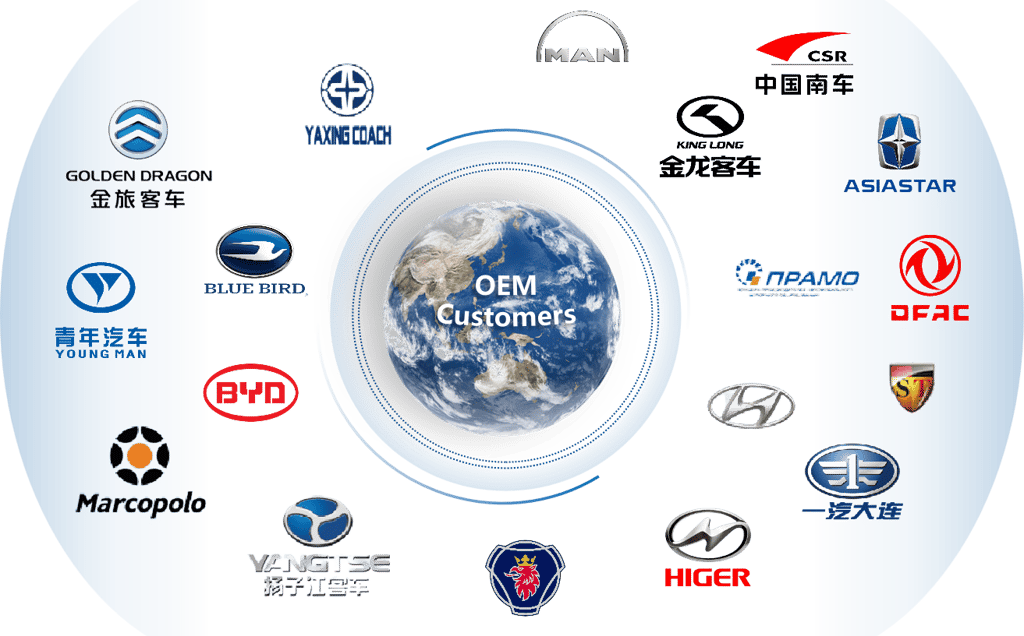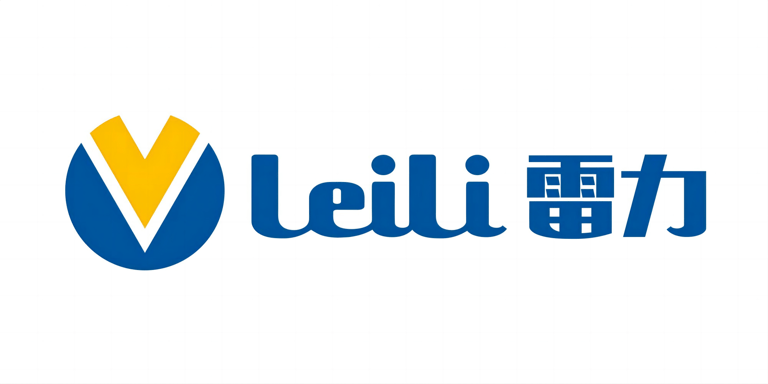Top Bus Brands Worldwide: Electric & Traditional
Discover the top bus brands worldwide, from electric leaders like BYD to European innovators Mercedes-Benz. Explore how sustainability and advanced bus parts shape the industry.
LEILI
Hower Yang
7/2/20256 min read


What bus brands are there in the world
The world of buses is vast and diverse. From school buses to city transit, each brand offers something unique.
Bus brands are not just about transportation. They reflect innovation, technology, and sustainability.
Electric buses are gaining popularity. They offer a cleaner, quieter ride and are better for the environment.
Major players like Mercedes-Benz, Volvo, and BYD lead the industry. They set standards in design and efficiency.
Chinese brands like Yutong and King Long are making waves. They are especially strong in the electric bus market.
North American brands focus on school and transit buses. Blue Bird and Thomas Built Buses are household names.
European brands are known for engineering excellence. MAN and Iveco are leaders in design and technology.
The bus industry is evolving. It embraces new technologies and meets changing consumer demands.
The Global Bus Industry: An Overview
The global bus industry is vast and dynamic. It serves millions of passengers daily, from urban commuters to school children. The variety of bus brands reflects the diverse needs of different regions and markets.
Buses are integral to public transport systems worldwide. They help reduce traffic congestion and play a pivotal role in mass transit solutions. The industry has seen significant advancements in technology and eco-friendly practices.
In recent years, there's been a shift towards sustainable solutions. Electric buses are now at the forefront of innovation. They promise reduced emissions and a quieter, smoother ride. This shift is driven by environmental concerns and governmental policies.
Diverse bus components enhance performance and safety. Key parts include:
Engines and drivetrains
Brake systems
Windshield wiper systems
Advanced seating and interiors
These components, alongside innovative designs, ensure buses meet high standards. The industry continues to expand, addressing urbanization and the demand for efficient public transportation. The future holds exciting prospects for buses and their evolving technologies.
Leading Bus Brands by Region
Bus brands are diverse, with each region having its unique leaders. These brands specialize in different types of buses, from school and city buses to long-distance coaches and electric models. Regional differences in infrastructure and customer needs influence these specializations.
North America: School and Transit Bus Leaders
North America has established its prominence in the school and transit bus sectors. Major companies in this region focus on durability and safety, essential for the rigorous demands of daily commutes. Blue Bird and Thomas Built Buses are widely recognized.
These companies are known for:
Innovative safety features
High-capacity models
Reliable diesel and electric buses
North American brands have capitalized on robust local demand. They have built strong reputations for reliability and comprehensive service. Environmental concerns are pushing these companies to innovate with cleaner technologies.
Europe: Engineering and Innovation
Europe boasts a strong heritage of engineering excellence. The continent is home to several renowned bus brands known for their cutting-edge technology and sleek design. Companies like Mercedes-Benz and Volvo dominate the European market.
European brands stand out for:
Advanced safety systems
Sleek, ergonomic designs
Fuel-efficient engines
These brands are continually pushing for improved passenger experience and reduced emissions. This focus on engineering and sustainability has made European buses attractive worldwide.
Asia: Pioneers in Electric Buses
Asia, particularly China, leads in electric bus production. Brands like BYD and Yutong are global leaders in this segment, driving innovation and setting standards in battery technology. Their expertise has enabled them to export worldwide.
Prominent features of Asian buses include:
Advanced battery technology
Environmental sustainability
Cost-efficient production processes
Chinese bus companies are rapidly expanding their global presence. They leverage large-scale manufacturing to reduce costs and offer competitive pricing. The focus on sustainability has placed these brands at the forefront of the green transport movement.
The Rise of Electric Buses
Electric buses have surged in popularity due to their environmental benefits. Concerns about air quality and fossil fuel dependency are pressing issues. As cities look for sustainable solutions, these buses offer a viable alternative to traditional diesel models.
Electric buses provide several key advantages. They produce zero emissions, significantly reducing urban air pollution. Additionally, they offer quieter operations, which enhances comfort for passengers and reduces noise in busy city areas. Lower operational costs due to less maintenance and fuel expense are another compelling advantage.
Factors driving the rise of electric buses include:
Government incentives for green technologies
Advancements in battery efficiency
Increased demand for sustainable public transit
Policy support plays a critical role in this transition. Subsidies and incentives make electric buses more accessible to transit agencies. As technology improves, range and charging times continue to enhance, making them a feasible option for more routes.
Key Bus Components and Suppliers
The bus industry relies on a network of component suppliers. Essential parts range from engines to electronic systems. Each plays a critical role in ensuring safety, efficiency, and reliability.
High-quality components contribute to the overall performance of a bus. Some parts, such as windshield wipers and brakes, are vital for safety. Other parts, like seats and infotainment systems, enhance passenger comfort.
Major components and suppliers include:
Engines (Cummins, Detroit Diesel)
Wipers (Leili, Bosch, Valeo)
Seats (Kiel, Isringhausen)
Tires (Michelin, Continental)
Suppliers constantly innovate to meet evolving bus standards. They focus on energy efficiency and environmental sustainability. Collaboration between bus manufacturers and parts suppliers is essential. It ensures the seamless integration of new technologies into bus models.
Windshield Wiper Systems: Safety and Innovation
Windshield wiper systems are crucial for bus safety. They maintain clear visibility in adverse weather conditions. Leading manufacturers like Leili, Bosch and Valeo lead advancements in this field.
Modern wipers are designed for durability and efficiency. Innovations have led to the development of advanced blade materials and motor technologies. Bus wiper systems now offer better performance with less noise.
Key features of new wiper systems include:
Improved motor power
Weather-resistant blades
Adjustable speed settings
These enhancements contribute to safer, more comfortable rides. Suppliers continue to innovate to improve reliability under various conditions. Ensuring clear visibility helps prevent accidents and ensures passenger safety.
Leili Auto Parts and Other Major Bus Parts Suppliers
Leili Auto Parts is a notable name in bus components. They supply a wide range of critical bus parts. Their offerings include wiper systems, electronics, and more.
Other key suppliers operate globally, providing high-quality components. These companies support the manufacturing and maintenance of efficient buses. Their expertise helps improve bus performance and reliability.
Prominent bus parts suppliers include:
Leili Auto Parts
ZF Friedrichshafen
Continental
Allison Transmission
These suppliers ensure buses run smoothly and safely. Their contributions to quality and innovation are vital. Collaboration with bus manufacturers results in improved technologies and better service life for buses.
Innovations and Trends in Bus Manufacturing
Bus manufacturing is experiencing a wave of innovation. Makers are pushing the limits in design and efficiency. Each innovation aims to enhance performance and sustainability.
A notable trend is the use of lightweight materials. These reduce weight, which improves fuel efficiency. Materials like aluminum and composites are replacing traditional metals.
Digitalization is transforming bus design and production. Computer-aided design and 3D printing are streamlining processes. This leads to faster prototyping and customization options.
Recent innovations in bus manufacturing include:
Adoption of artificial intelligence for better operation.
Development of eco-friendly production techniques.
Focus on passenger-centric design enhancements.
Sustainability remains a major focus. Manufacturers are integrating renewable energy sources. Solar panels and energy-efficient systems are being incorporated into buses.
Collaboration with tech companies is also rising. This synergy is creating smarter public transport systems. Such partnerships foster breakthroughs in autonomous driving and safety technologies.
The future of bus manufacturing promises smarter, greener solutions. The commitment to innovation ensures buses meet modern demands. These changes contribute to both environmental goals and improved user experiences.
The Future of Bus Brands: Sustainability and Smart Technology
The future of bus brands is steering towards sustainable solutions. Environmental concerns are pushing firms to innovate. Eco-friendly practices are now a cornerstone of bus production.
Smart technology is deeply influencing bus design. Modern buses feature smart systems for optimized performance. These systems enhance energy efficiency and passenger experiences.
Key aspects of future bus developments include:
Increased use of renewable energy.
Integration of intelligent transport systems.
Focus on reducing carbon footprints.
Automation in buses is becoming a reality. Self-driving buses are being tested in various cities. These innovations promise to decrease human error and enhance safety.
Data analytics is playing a pivotal role. Bus companies are harnessing data for better operational efficiency. Real-time analytics helps in making informed decisions quickly.
The industry is evolving with a vision for a cleaner, smarter future. These advancements mark the beginning of a new era in public transport. The focus remains on marrying sustainability with technological advancements.
Conclusion: Choosing the Right Bus Brand
Selecting the ideal bus brand depends on various factors. Buyers should consider operational needs and environmental priorities. Evaluating the brand's track record on innovation and sustainability is crucial.
Each brand offers unique features to suit different markets. For urban environments, electric buses provide clear benefits. Meanwhile, traditional buses might suit other settings better. Buyers must weigh the total cost of ownership and reliability. Support and availability of bus parts play a significant role too.
Ultimately, informed decision-making ensures the right investment. A comprehensive understanding of both current trends and future developments is essential. This approach allows for a choice that is both practical and forward-thinking.
